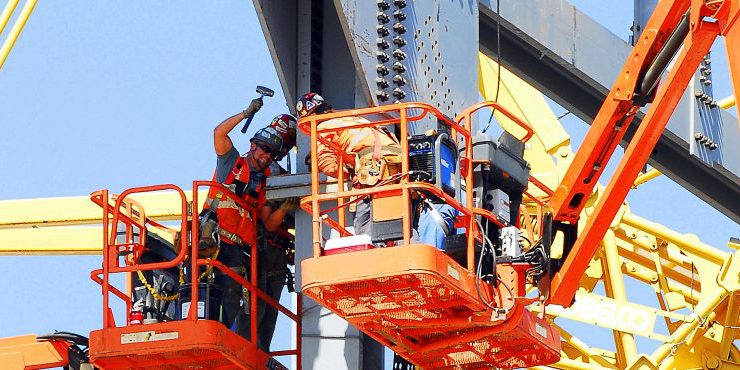Contributor: David Lynn, CSP
When I worked at Duracell, we went through an aggressive growth phase. I was the sole Safety Engineer at our plant where we manufactured AA and AAA batteries for North America and the battery business was good. We operated seven days a week, twenty-four hours a day, and we still could not keep up with the demand. The strength of the battery market led to a massive expansion of our plant. At the height of the expansion, we continued to make batteries at a record pace, even though we had construction activities on three out of the four sides of the plant. Imagine the potential hazards with construction activities in full swing while you still make a product. There was plenty of excitement and more than enough to do. I struggled to keep up with the demand.
I faced huge challenges that consumed every minute of my day, and I lost sleep over the risk involved with an operational plant working beside a large construction site. The potential risk was the loss of life, regulatory non-compliance, liability issues, disruptions, execution problems, and the overall public relations of the job. As I think back on that growth period, I realize how much I needed help with the construction side of my responsibilities. I was swamped with normal plant issues, and I was overwhelmed with the dynamic nature of construction.
What I know now is that you have to control the contractor alignment process in three stages. If you can execute these three elements, you have a better opportunity for success:
- Initial Contractor Safety Qualifications
If you award work to contractors with a questionable safety record, you put your company at risk. Past history is a good indicator of future performance. Based on that principle, it is imperative that companies have a robust safety pre-qualification process for contractors. Review each contractor’s safety performance and measure them by your standards. Disqualify contractors who do not meet your expectations.
- Contractor Safety Alignment
Do not assume contractors understand your safety culture and expectations. Provide contractors with all of the appropriate rules, procedures, and policies. You can even provide sample tools such as a Principle to Practice Safety Execution Plan book. Do anything you can to help set the contractor up for success. Then meet with them face-to-face so that you can review your expectations. This is an opportunity to establish a working relationship, and clarify any confusion. When clients do not align with contractors, you will hear contractors make comments such as, “If I had known that was what you meant, I would have bid the job differently!” Alignment helps everyone know what you mean, and you should be sure to document the process to avoid future selective memory. - Contractor Safety Performance Measurement & Monitoring
You cannot improve what you do not measure. One of the top three ways to have a positive impact on safety is to audit your processes and score the performance. You can provide simple tools like the Principle to Practice Safety Walkthrough Guide to help monitor compliance with regulations. The principle also helps a client coach contractors who perform work on their property. If you measure contractor safety performance with a consistent scorecard, the process serves as an extenuation of the alignment phase. Scored audits provide a “hands-on” approach that will show contractors what the client expects. Companies should track progress and hold the contractor management team responsible for improvement.
These critical phases apply to both large and small projects, and they take time and commitment. But, if you work hard to evaluate, communicate and measure safety performance with contractors, you have a better opportunity to succeed.



